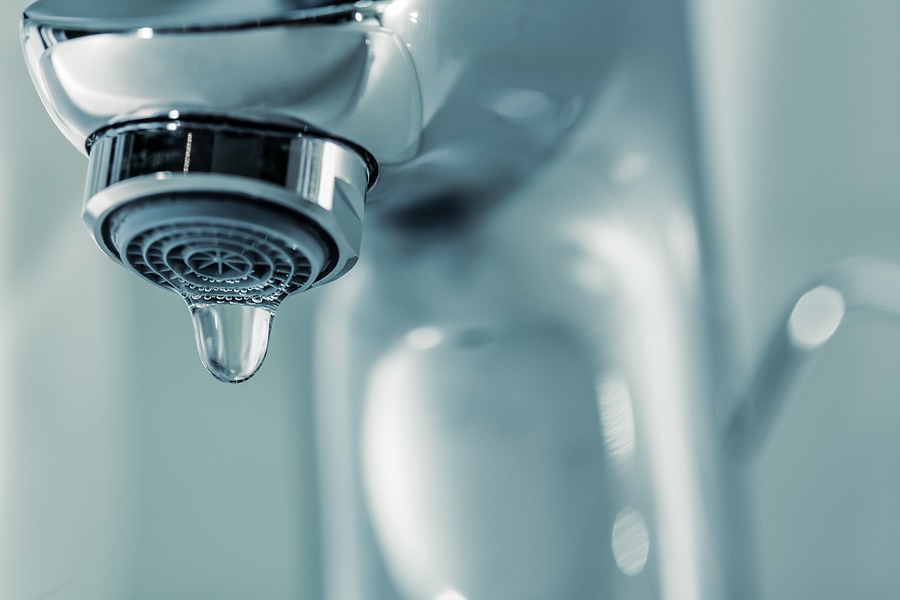The content which follows on the subject of Leaky Faucets: Why They Happen & What to Do About Them is quite compelling. Check it out for yourself and see what you think of it.

Trickling taps might look like a small trouble, but their influence exceeds simply the nuisance of the sound. From drainage to incurring unneeded economic expenses and health dangers, ignoring a dripping tap can cause different effects. In this write-up, we'll look into why it's crucial to address this typical home concern immediately and efficiently.
Wastefulness of Water
Ecological Influence
Dripping taps add significantly to water waste. According to the Epa (EPA), a solitary tap trickling at one drip per second can waste greater than 3,000 gallons of water each year. This not only strains water resources yet likewise impacts ecological communities and wildlife dependent on them.
Step-by-Step Guide to Dealing With a Dripping Faucet
Devices Needed
Prior to attempting to take care of a trickling tap, collect the needed devices, including a flexible wrench, screwdrivers, replacement parts (such as washers or cartridges), and plumber's tape.
Typical Tap Issues and Their Solutions
Identify the type of faucet and the certain concern triggering the drip. Common issues consist of damaged washing machines, rusty valve seats, or damaged O-rings. Refer to manufacturer instructions or on-line tutorials for detailed advice on repair services.
Financial Costs
Boosted Water Bills
Past the environmental effect, leaking faucets can blow up water bills substantially. The gathered wastage over time equates into greater energy expenses, which can have been avoided with timely repair work.
Prospective Building Damages
In addition, long term trickling can lead to harm to components and surface areas bordering the faucet. Water build-up can trigger staining, corrosion, and also structural concerns if left neglected, causing extra repair costs.
Health Concerns
Mold and Mold Development
The continuous existence of wetness from a leaking faucet develops an ideal setting for mold and mold development. These fungi not just jeopardize indoor air top quality however also posture health and wellness risks, particularly for people with breathing problems or allergies.
Waterborne Diseases
Stationary water in trickling taps can end up being a breeding place for microorganisms and various other pathogens, increasing the threat of waterborne illness. Impurities such as Legionella germs thrive in stationary water, potentially bring about significant diseases when consumed or inhaled.
DIY vs. Professional Repair work
Pros and Cons of Do It Yourself Repair Service
While some might try to take care of a trickling tap themselves, do it yourself fixings include their very own set of obstacles. Without correct understanding and devices, DIY efforts can exacerbate the problem or bring about incomplete repair services, prolonging the issue.
Advantages of Employing a Specialist Plumber
Hiring a specialist plumber guarantees that the underlying cause of the leaking tap is addressed efficiently. Plumbing professionals possess the expertise and devices to detect and fix tap issues efficiently, saving time and decreasing the threat of further damages.
Environmental Obligation
Private Payment to Preservation
Taking responsibility for repairing leaking taps straightens with more comprehensive initiatives towards water preservation and ecological sustainability. Every person's activities jointly make a considerable effect on maintaining priceless resources.
Lasting Living Practices
By prioritizing timely fixings and taking on water-saving habits, individuals contribute to lasting living methods that profit both existing and future generations.
Preventive Measures
Normal Maintenance Tips
To stop dripping taps, perform regular maintenance such as cleaning up aerators, examining for leakages, and replacing damaged parts without delay. Additionally, consider mounting water-saving devices or upgrading to a lot more efficient components.
Value of Prompt Repairs
Dealing with trickling faucets as quickly as they're noticed stops additional water waste and potential damages, eventually saving both water and cash in the long run.
Effect On Property Worth
Assumption of Well-Maintained Residential Property
Keeping a home in good condition, consisting of attending to maintenance problems like leaking faucets, boosts its perceived worth and value among potential buyers or lessees.
Influence on Resale Value
Characteristics with well-kept plumbing fixtures, consisting of taps, command higher resale worths in the real estate market. Resolving leaking taps can contribute to a positive impression throughout residential or commercial property inspections and negotiations.
Verdict
Resolving a dripping faucet surpasses simple ease; it's a crucial step toward conserving water, lowering financial expenses, and protecting health and building. Whether with DIY repair services or specialist assistance, doing something about it to fix dripping taps is a small yet impactful means to promote liable stewardship of sources and add to a much healthier, a lot more sustainable future.
How to Fix a Leaky Faucet: Step-by-Step Repair Guide
A leaky faucet may seem like a simple annoyance, but if it's not fixed promptly, that leak could cost hundreds to potentially thousands. From water damage to mold, mildew, and high water bills, even a tiny leak can be catastrophic if left unattended. Damage like this can even affect the overall value of your home, so it's important to take the right approach for leaky faucet repair. You may need the help of a plumber in some cases, but we've got a few tips you can try on how to fix a leaky faucet before calling the pros.
Four Faucet Types
When you're learning how to fix a leaky faucet, the first step is knowing what kind of faucet you're working with! There are four common types.
Cartridge Faucets
Cartridge faucets come in one- or two-handled varieties. In one-handled cartridge faucets, hot and cold water combines in a single cartridge. In the two-handled versions, hot and cold water are controlled separately and mixed in the faucet.
Ball Faucets
Ball faucets have a single lever you push up and down to adjust the pressure and rotate to change the temperature. A slotted metal ball controls the amount of water allowed into the spout.
Compression Washer Faucets
They're the oldest type of faucet, but they're still used in many homes — especially older ones. Compression faucets have two separate handles that, when turned, raise or lower the washer that seals a water valve. This valve stops water from flowing through the faucet when it is turned off.
Disc Faucets
Disc faucets rarely need to be repaired due to their maintenance-free design. The water flow is controlled by two discs — the upper one raises and lowers against a fixed lower disc, creating a watertight seal. If your disc faucet starts leaking, you may need to replace the seals or clean residue buildup from the inlets.
Fixing a Leaky Faucet
Step 1: Turn Off the Water
Whether you're learning how to fix a leaky bathtub faucet or how to fix a leaky kitchen faucet, always turn off the water supply to your working area when you're fixing a leak. The last thing you want is a flood added to your list of things to fix.
Look for the shutoff valves below your sink or around the tub and turn them clockwise to stop the water flow. If your faucet doesn't have shutoff valves, you may need to turn off the water for the whole house. Check to make sure it's off by turning the faucet on. If nothing comes out, you're ready to start the repair.
Step 2: Take Apart the Faucet
How you disassemble your faucet depends on the type of fixture you have. You can use a flathead screwdriver to remove the caps on top of the handle or handles for cartridge and compression faucets. Inside, you should see handle screws. Unscrew these with a screwdriver to remove the handle.
Disc- and ball-style faucets will typically have an inlet screw near the handle, and removing that will reveal the interior of the faucet.
Detach the Valve Stem
For cartridge- and compression-style faucets, you'll see the inner valve stem or cartridge once you remove the faucet handles. If you have a compression faucet, unscrew the brass valve stem. If you have a cartridge faucet, pull out the cartridge. If your cartridge has been in place for a while, it may require some tools or extra force to remove it due to mineral deposits.
Examine and Replace Parts
Once you've removed the parts, check them out to confirm what needs to be replaced. You may see corroded rubber washers, O-rings, stems, or cartridges. On a ball-style faucet, check the seats and springs for damage.
If you need to repair a leaky disc faucet, check the inlet and seals on the lower disc.
Once you determine what parts must be replaced, visit your local hardware store. Bring the damaged parts with you to ensure you can purchase the correct components to replace them.
Clean Valves and Faucet Cavity
If you've removed a stem or cartridge, you may notice mineral buildup in the faucet's threads. Use white vinegar to clean the valve seat by soaking it for a few minutes, then scrub it away with a soft toothbrush and rinse with warm water. You can also clean the interior of the faucet in the same way.
Reassemble the Faucet
Once your faucet is cleaned and the required parts have been replaced, it's time to reassemble it. Put the pieces back together and slowly turn the water supply back on. Doing this slowly is crucial because too much initial water pressure can damage the new hardware you've just installed.
https://homewarranty.firstam.com/blog/how-to-fix-leaky-faucet

As an enthusiastic person who reads about Why Are My Faucets Dripping (And Can I Fix It Myself)?, I imagined sharing that excerpt was a great idea. Are you aware of another individual who is interested in Why It's Important to Fix Leaky Faucets? Do not hesitate to share it. Thank you so much for going through it.